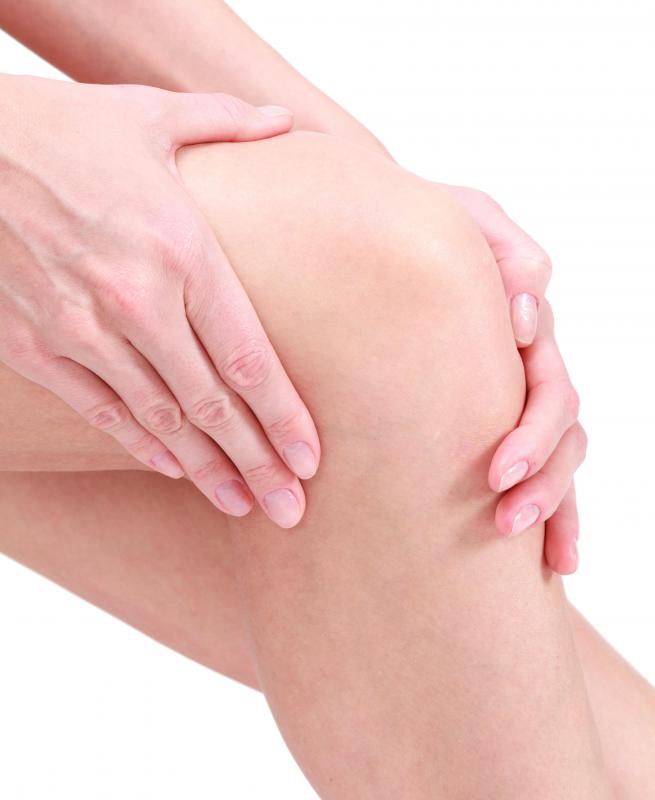At TheHealthBoard, we're committed to delivering accurate, trustworthy information. Our expert-authored content is rigorously fact-checked and sourced from credible authorities. Discover how we uphold the highest standards in providing you with reliable knowledge.
What are Femoral Condyles?
Femoral condyles are the pair of round bony protrusions emanating from either side of the bottom of the femur bone in the thigh. Palpable to either side of the knee joint when it is bent, they are known specifically as the medial and lateral femoral condyles. The medial condyle is named for its location on the inside of the knee, closer to the midline of the body, while the lateral condyle is found on the outside of the knee, away from the midline of the body. Several muscles, ligaments, and other tissues originate or insert on the femoral condyles, among them the popliteus on the back of the knee, the gastrocnemius muscle of the calf, and the medial and lateral collateral ligaments of the knee joint.
The popliteus is a muscle of the back of the knee that originates on the lateral femoral condyle. It crosses the back of the knee obliquely and inserts on the posterior surface of the upper tibia bone in the lower leg. This muscle is involved in rotation of the knee joint during movements in which the foot is on the ground.

The action of the popliteus depends on whether the femur or tibia is in a fixed position. When the originating end of the popliteus on the femoral condyle is in a fixed position, meaning that the femur is immobile and the tibia is moving relative to it, the muscle internally rotates the tibia relative to the femur, thereby unlocking the knee joint. Conversely, when the inserting end of the popliteus on the tibia is in a fixed position, meaning that the tibia is immobile and the femur is moving relative to it, the popliteus externally rotates the femur relative to the tibia, also unlocking the knee.

Another muscle that finds its origins on the femoral condyles is the gastrocnemius, the large muscle of the calf. A two-headed muscle, it originates on either side of the knee, with the medial head arising from the medial condyle and the lateral head arising from the lateral condyle. Though it crosses the knee joint, the gastrocnemius acts mostly on the ankle joint, hinging the foot downward when in contracts in a motion known as plantarflexion.

Two major ligaments of the knee attach to the femoral condyles as well. Known as the collateral ligaments because they run parallel to either side of the joint, they are the tibial or medial collateral ligament (MCL) and fibular or lateral collateral ligament (LCL). Each links the femur to one of the two shin bones; both are responsible for holding the joint together and stabilizing the joint against horizontal forces.
AS FEATURED ON:
AS FEATURED ON:













Discussion Comments
Kneecap bursitis, infection, rheumatoid arthritis, osteoarthritis, cysts, tumors, gout and general wear from overuse or excessive weight can cause a number of problems in the knee.
There are doctors who specialize in this area and they can recommend different avenues of treatment depending on the specific problem you may have.
When excess fluid accumulates inside or around the knee is referred to knee effusion sometimes called water on the knee. There are many causes for this ailment. Arthritis, injury to the ligaments or fluid collecting in the small fluid sac that cushions the knee joint, better known as the bursa.
There are many symptoms for this condition and the symptoms vary depending on the cause. Swelling, stiffness and bruising of the area are all possible.
Post your comments